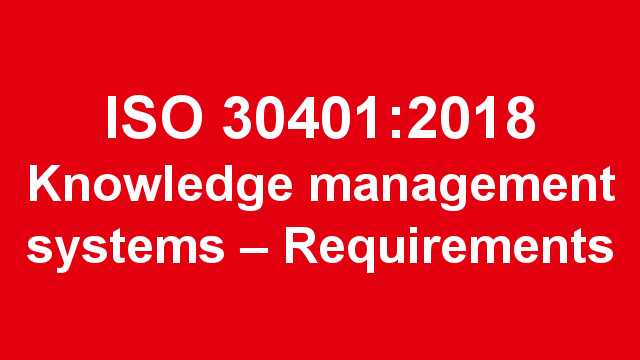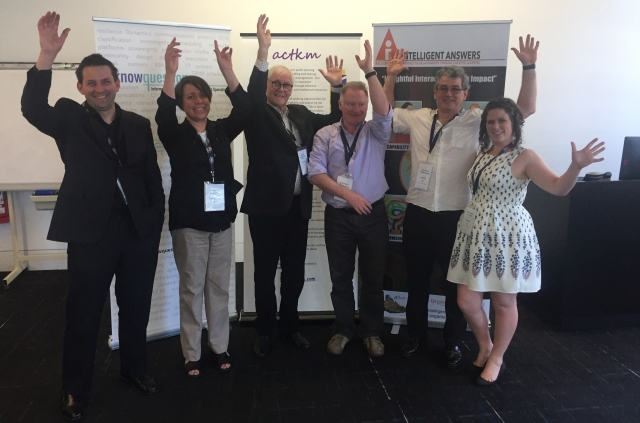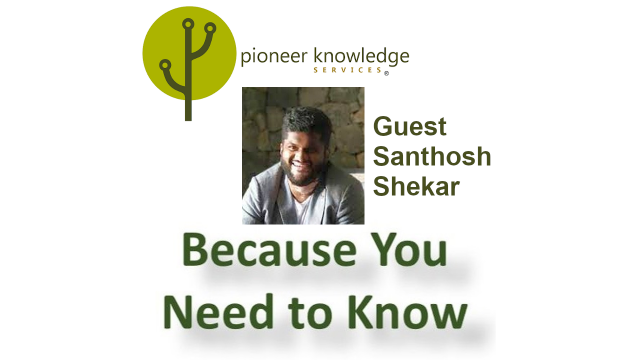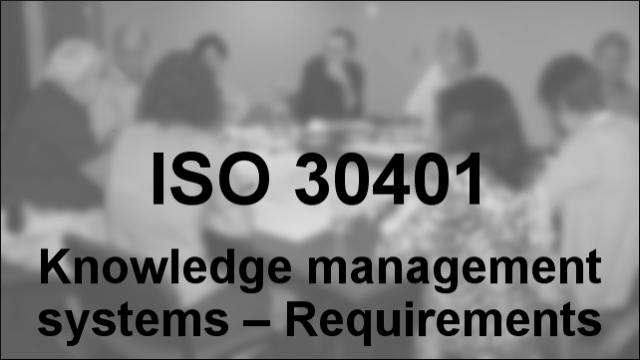
Evaluating ISO 30401 standard: Part 1 – What has changed since the draft?
This article is part of a series of articles on the new international knowledge management (KM) standard, ISO 30401 Knowledge management systems – Requirements.
In the lead up to the publication of the new knowledge management standard ISO 30401:2018 in October 2018, there were concerns in the KM community about the purpose and value of such a standard. The draft standard was published in November 2017 and attracted some significantly negative commentary. Online debate centred around several major critiques:
- the standard becoming a “consultants’ charter with a fair degree of product placement”
- reference to some contentious concept including knowledge asset management, knowledge workers, and the SECI knowledge lifecycle
- concerns that the standard appeared to operate KM activities separately from related domains
Feeling it was important to engage with the draft standard in good faith, I collaborated with Dave Griffiths and others to submit feedback on general recommendations as well as detailed suggestions for text amendments to the draft standard. Many others also used the online submission tool to provide comments of their own.
After closure of the feedback period, the committee continued working behind the scenes. The effort and achievement of the committee in getting the final standard released should not be underestimated. Paul Corney and Karen McFarlane reflected on the lengthy process and how they hope the new standard will be used in a recent CILIP article:
Work started in 2015 and was conducted by an ISO steering committee supported by eight national mirror committees including the UK, which contributed significantly to the initial draft.
A draft was made available for public review for a six-week period during December 2017 and January 2018. Hundreds of comments were received and the UK BSI committee went through each one (including those of CILIP’s K&IM SIG), identifying 270 suggestions to be referred back to the ISO committee …
The new KM Standard will not try to tell you how to do KM, but it does help you ensure you have set up a good management system … [it] is like a new kitchen without the utensils, the crockery, cookbook; it’s down to those who use it to determine how it will work for them.
While it is encouraging to hear that the ISO committee considered all suggestions made to them during the draft stage, their actions speak louder than words here. After a line-by-line comparison of the draft standard and the final publication, here is a full list of substantive changes made:
- 0.1 Purpose
- standard refers to a “KM approach and outcomes” instead of a “KM solution”
- standard includes auditing and certifying by recognising auditing bodies as a purpose for the standard
- 0.2 The importance of knowledge management
- instead of “effective action”, standard references “efficiency of processes and contributes to their enhancement, creates resilience and adaptability, creates competitive advantage”
- knowledge is now deliberately “created, consolidated, applied and reused” rather than just “created, applied and reused”
- knowledge loss is now recognised as a function of both organisational silos as well as staff turnover
- now explicitly recognises that “knowledge management supports existing process and development strategies”
- 3.4 management system
- now includes a note that systems can include human and group dynamics and behaviours
- 3.17 audit
- now explicitly defined as a concept within the standard
- 3.25 knowledge
- new note that “knowledge can be individual, collective or organizational”
- 3.29 knowledge worker & 3.30 learning organization
- both definitions removed entirely
- 4.4.2 Knowledge development
- references to the knowledge “lifecycle” have been replaced with “systematic activities and behaviours”
- many new examples included under each of acquiring new knowledge, applying current knowledge, and retaining new knowledge
- “managing outdated knowledge” now reads “handling outdated or invalid knowledge”
- 4.4.3 Knowledge conveyance and transformation
- The use of “conveyance and transformation” is a new heading, with a significantly expanded narration:
The organization shall demonstrate that the knowledge management system covers the following activities, for effectively managing knowledge through its stages of development through systematic activities and behaviours, supporting the knowledge management system objectives and covering the [knowledge domains which have the greatest value to the organization and its interested parties] …
a) Human interaction …
b) Representation …
c) Combination …
d) Internalization and learning
- The use of “conveyance and transformation” is a new heading, with a significantly expanded narration:
- 4.4.4 Knowledge management enablers
- “Responsibilities” is now “Human capital”
- “Knowledge management culture” is a new subheading
- 4.5 Knowledge management culture
- Expands on the existing definition, now including “A culture where connections and knowledge activities are encouraged, and knowledge is valued and actively used”
- 5.1 Leadership and commitment
- Refers to “knowledge management policy” and “knowledge management objectives”, rather than just “knowledge policy” and “knowledge objectives”
- Leadership now includes “motivating, inspiring [and] empowering”
- 6.2 Knowledge management objectives and planning to achieve them
- KM objectives now must “meet the prioritised requirements of the interested parties [ie needs and expectations … structured in terms of business and organizational performance]”
- New description of what a KM objective can be:
Objectives may be quantitive or qualitative, and relate to issues such as safety, time, risk, quality, cost, market share, customer experience … The objectives may be of different types, as business results, organizational results, customer related results and/or social and environmental results.
- 9.2 Internal audit
- Removed the requirement for an auditor to be trained in knowledge management systems
- 10.2 Continual improvement
- No longer specifies how continual improvement shall be achieved. Previously specified “benefits derived from the knowledge management solutions implemented [and] new additional solutions, for existing and developing needs of the organization”
Part 2 will involve a detailed assessment of whether committee has addressed the recommendations I submitted during the draft feedback period.
For further information on ISO 30401:2018, including the background to its development and discussion of issues that should be considered in its implementation, see the other articles in the RealKM Magazine ISO 30401 series.







I would be interested if KM communities like the Swiss Knowledge Management Forum or Gesellschaft für Wissensmanagement (GfWM) habe been contacted regarding some of the definitions. Currently, I am not aware of this.
For example in 2009 six KM communities in the German speaking Europe have mutually agreed on a KM glossary with the top 50 terms:
https://www.skmf.net/en/resources/glossary/
It might be beneficial to collaborate, so that the norm receives wider acceptance among the KM professionals 🙂